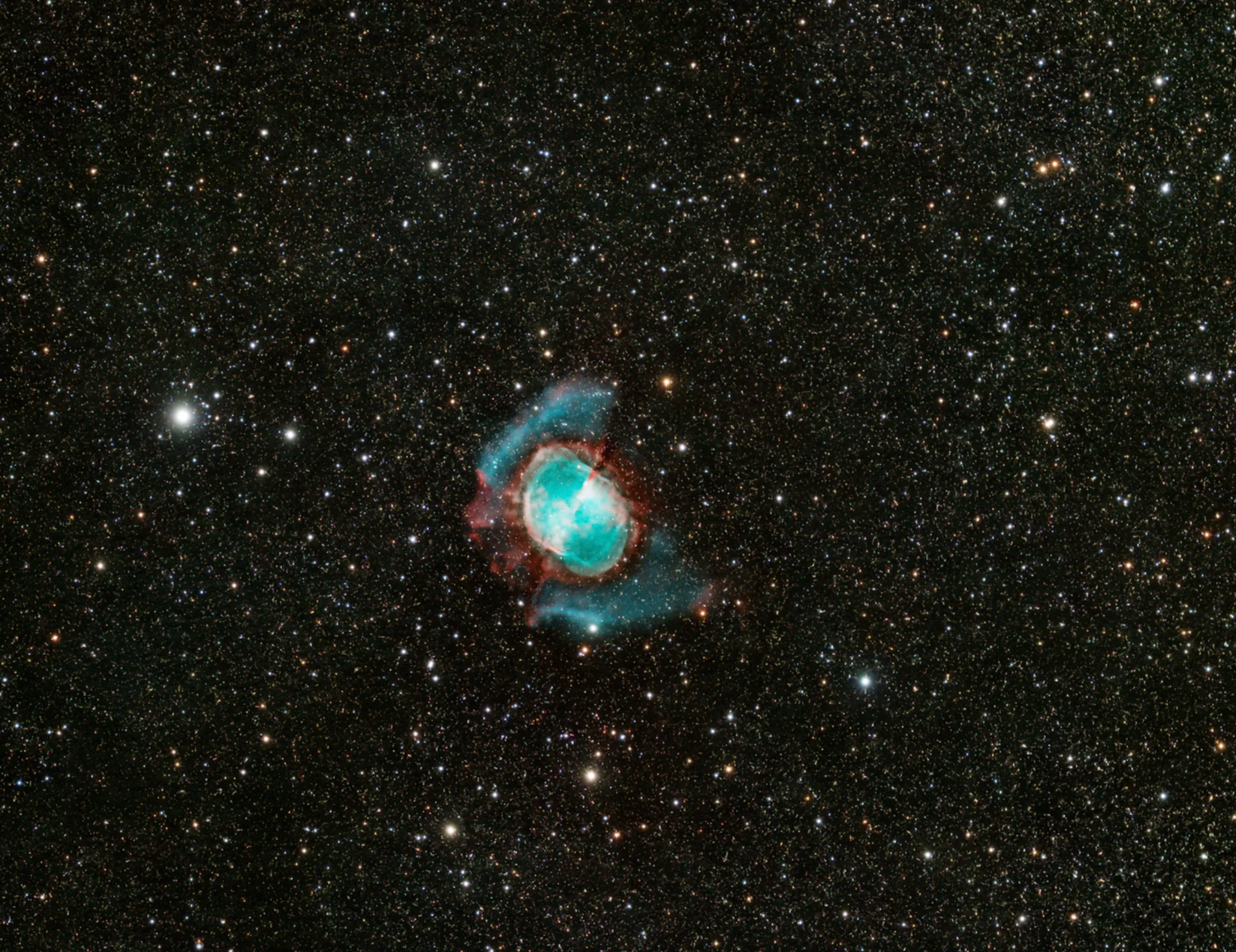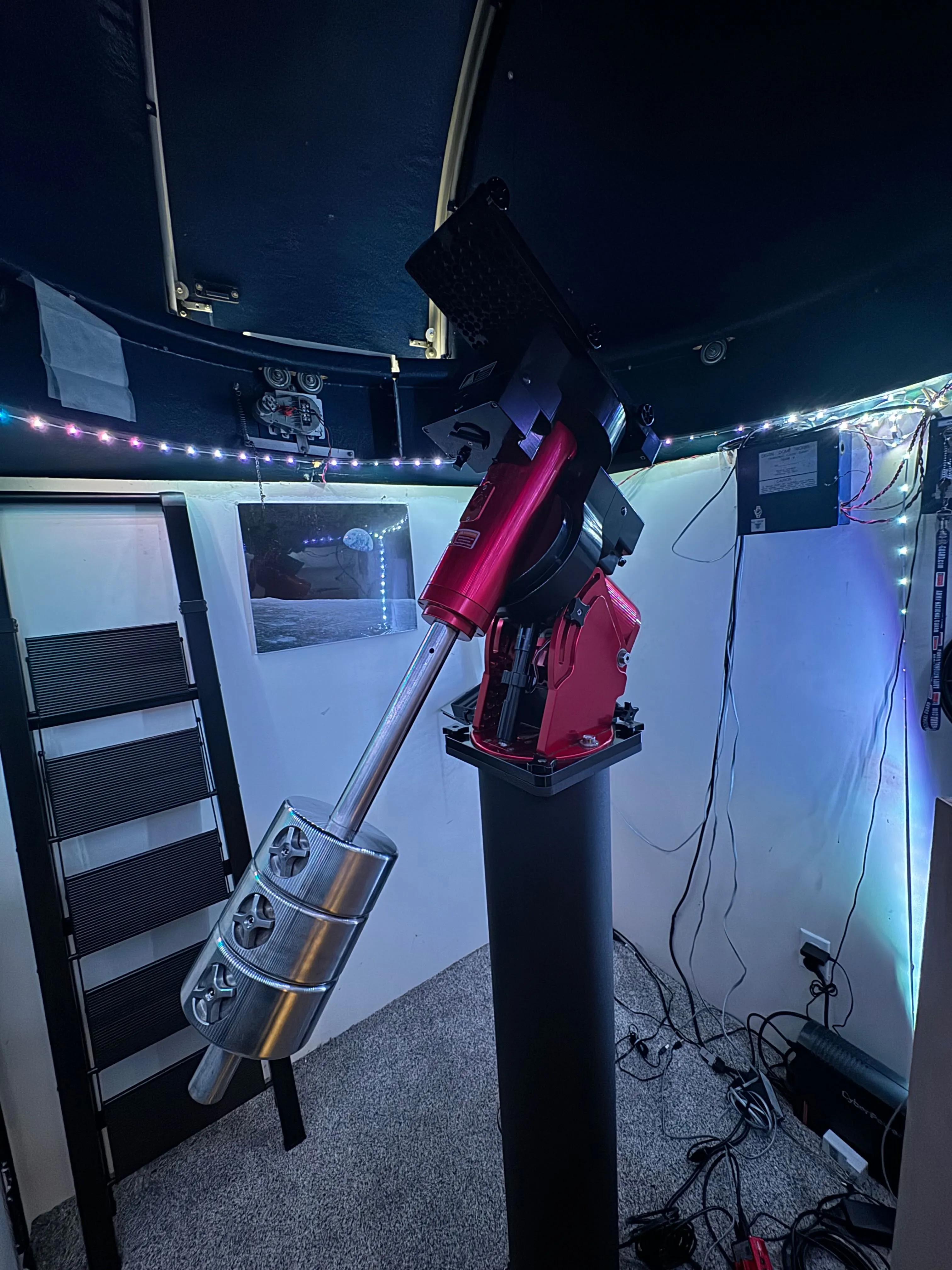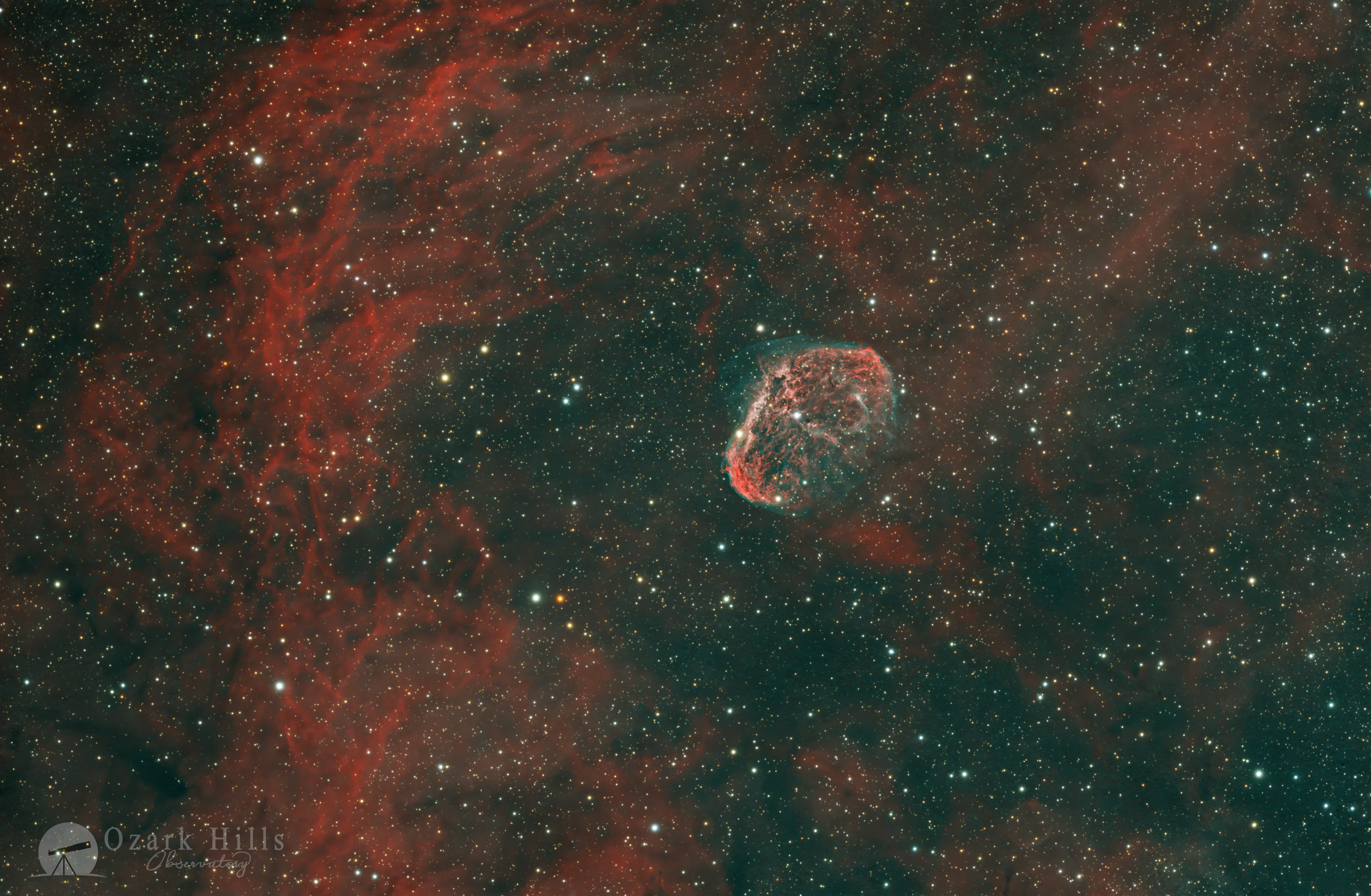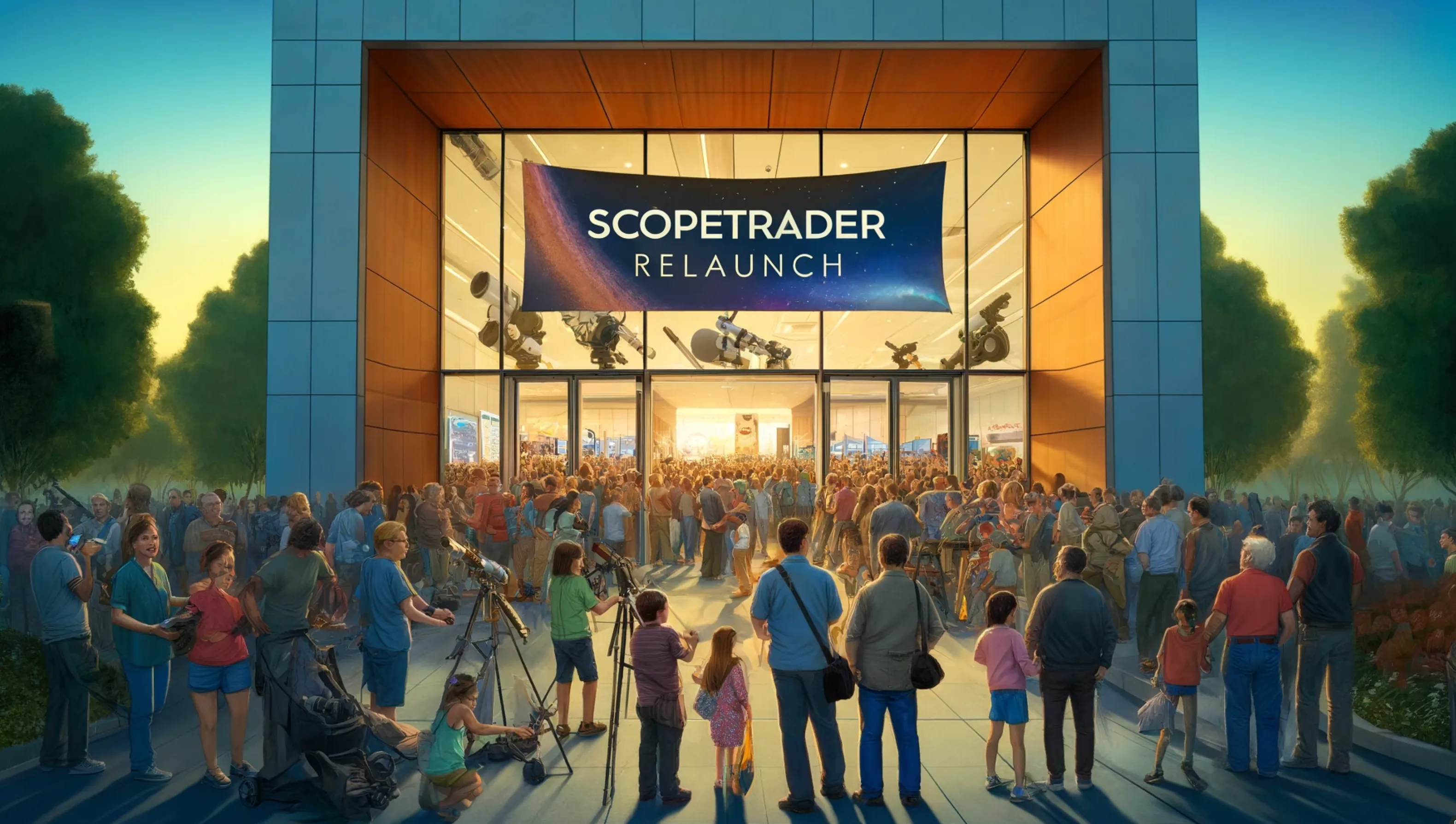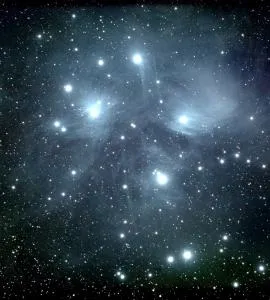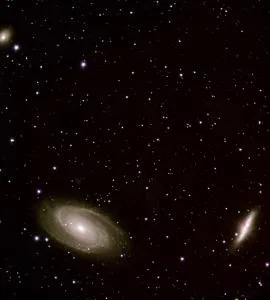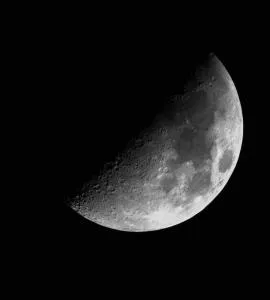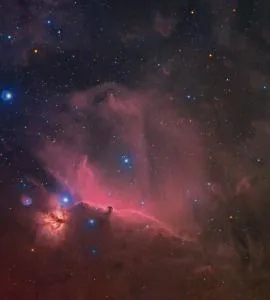Experiencing the 2024 Solar Eclipse in the Ozarks
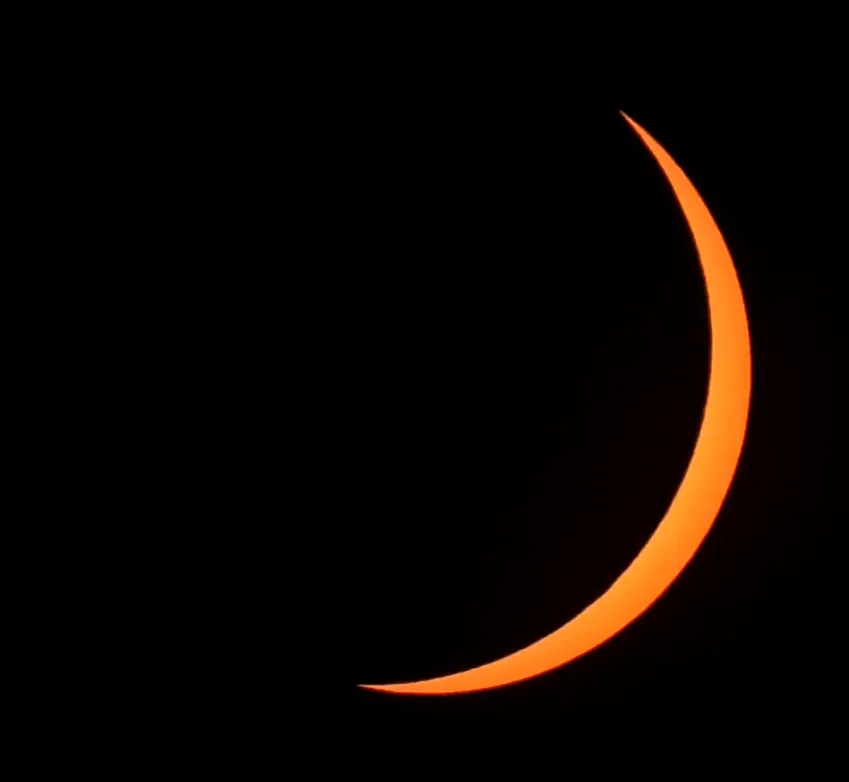
The solar eclipse in April 2024 gave us the opportunity to see the moon eclipse over the sun while we ran time-lapse photos on our ZWO SeeStar, and Askar FRA600.
A solar eclipse is like a cosmic shadow play that happens when the Moon moves directly between the Earth and the Sun. This alignment causes the Moon to cast a shadow over the Earth, temporarily dimming the sunlight in some areas.
There are three types of solar eclipses: total, partial, and annular. During a total solar eclipse, the Moon completely covers the Sun, as seen from the Earth. This can turn day into a brief twilight. An annular eclipse happens when the Moon covers the Sun's center, leaving a "ring of fire" visible around the Moon. A partial eclipse occurs when only a part of the Sun is obscured by the Moon.
The path of the total solar eclipse in 2024 will be where the darkest part of the Moon's shadow, called the umbra, hits the Earth. This path will cross through several countries, giving people within a narrow band the chance to experience the total eclipse. Outside of this path, people can still see a partial eclipse, where the Moon covers a portion of the Sun.
Solar eclipses are not only stunning to watch but also provide unique opportunities for scientific research, including studies on the Sun's outer atmosphere, called the corona, which is easier to study during an eclipse. For safety, if you plan to watch an eclipse, always use special eclipse glasses or indirect viewing methods to protect your eyes from the Sun's harmful rays.
For the solar eclipse in 2024, from our location in the Ozarks, we were able to see about 97% of totality! The video below was shot over 2 hours, with a photo every 60 seconds.
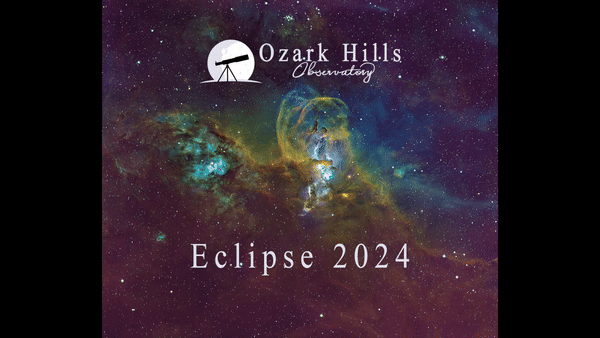
Tree shadows during a solar eclipse
During a solar eclipse, the fascinating phenomenon of tree shadows transforming into a unique pattern of crescents or rings of light can be observed. This natural spectacle occurs because the gaps between leaves act as pinhole cameras. Normally, the sunlight passing through these small openings creates a blurry image of the Sun on the ground. However, during a solar eclipse, as the Moon passes in front of the Sun, it changes the shape of the sunlight that filters through.
Instead of the usual dappled light spots we see on a sunny day, the eclipse causes each of these light spots to take on the shape of the partially obscured Sun. When the Sun is partially covered by the Moon, the tiny gaps between the leaves project miniature crescent shapes onto the ground or any surface below the tree. This is because the gaps between the leaves only allow some of the sunlight through, and during an eclipse, that sunlight is in the shape of a crescent.
This effect is most pronounced during a partial solar eclipse or the partial phases of a total solar eclipse. Observers under trees during these times will notice the ground or walls covered in these miniature crescents, creating a surreal and beautiful scene that mirrors the celestial event happening above.
The tree shadow phenomenon during an eclipse serves as a reminder of the intricate ways in which natural phenomena are interconnected, offering a unique and easily accessible way for anyone to safely enjoy the spectacle of a solar eclipse without looking directly at the Sun. It's a magical moment that combines the simple beauty of nature with the grandeur of cosmic events.
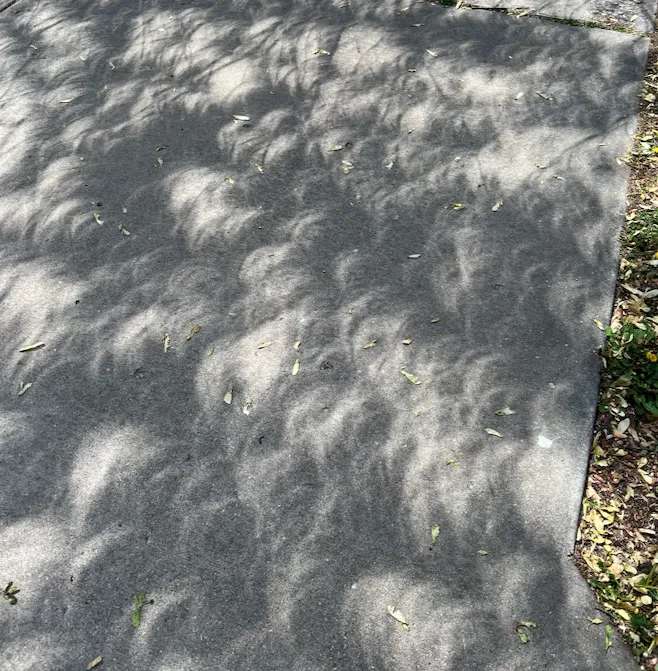
Tree shadow photo credit: Emily Bridenbaugh
Equipment used to capture the 2024 solar eclipse
Askar FRA400
SeeStar 50
Canon 6D MII
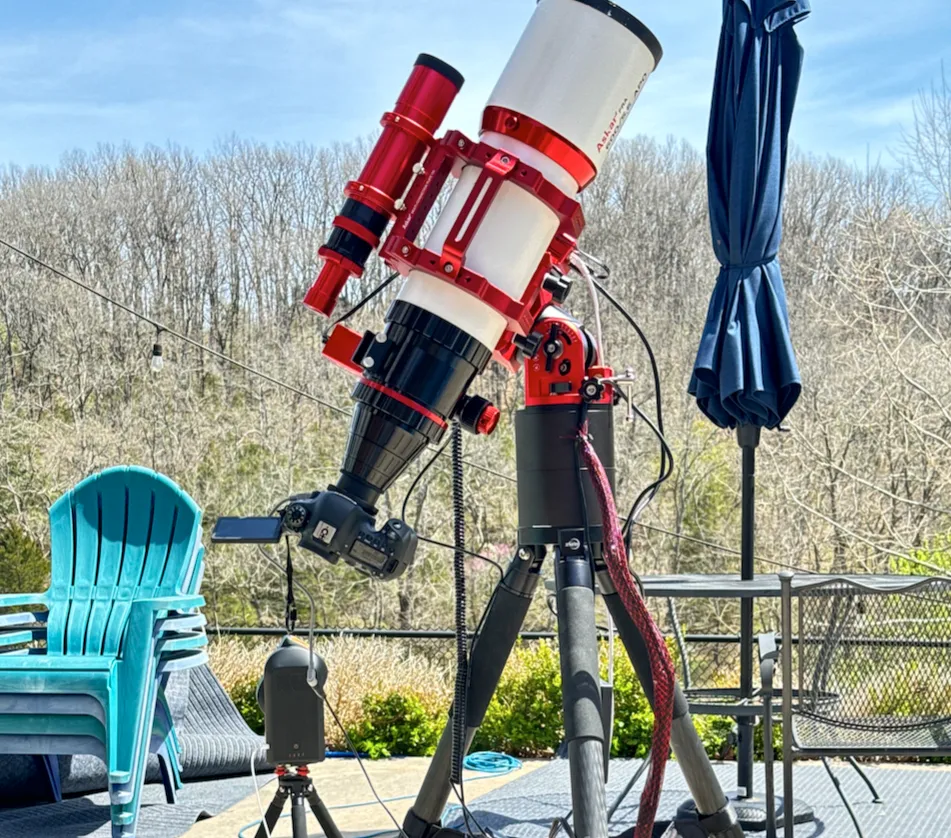
The moment of totality, when the Moon entirely obscures the Sun, presents an awe-inspiring sight. Unfortunately, from our vantage point, we were unable to witness totality directly. However, we're thrilled to share a stunning capture by Jeff Grant, taken in Clinton, AR. Utilizing a Celestron 114 telescope paired with a Canon DSLR camera, Jeff skillfully documented this breathtaking astronomical event.
About the Author

Meet Richard Harris, a passionate and dedicated astronomer who embarked on a cosmic journey at the age of 11 and has been reaching for the stars ever since. Born with an innate curiosity for the universe. Richard's fascination with astronomy ignited when he first gazed up at the night sky and felt an indescribable connection to the cosmos and creation. As a younger lad, Richard spent countless hours poring over astronomy books, studying constellations, and learning about the celestial wonders that grace our skies. In 2001, Richard invented the HyperTune telescope process, which has grown into the standard for German equatorial telescope mount tuning across the globe. He is also the founder of ScopeTrader, a global resource helping to grow the hobby of astronomy which started in 2002, and the CEO of Moonbeam software company, started in 2008. When he's not taking photos of our universe, you can find him with family, playing guitar, or traveling.

